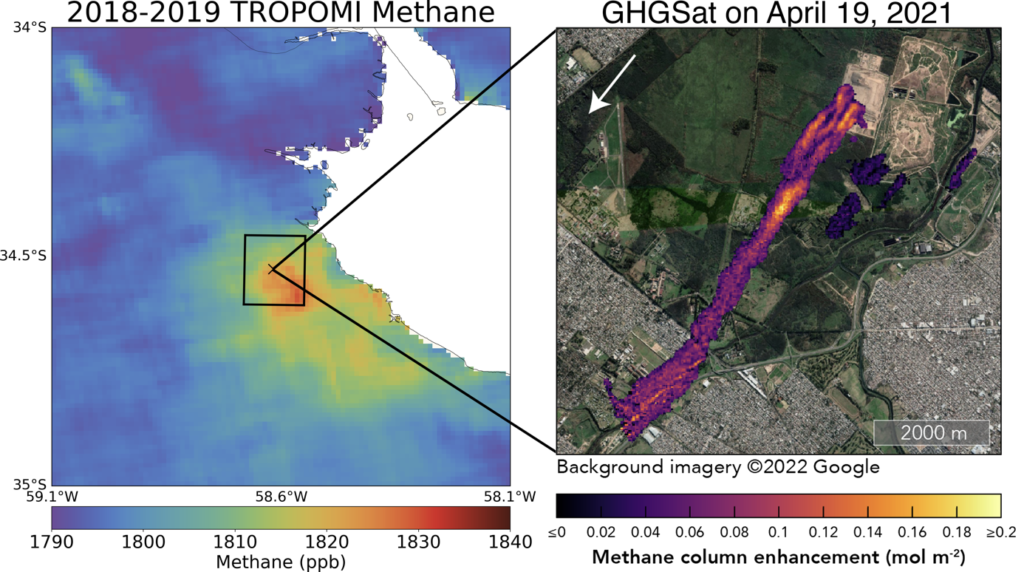
SRON discovers garbage dumps with large methane emissions using satellites
News | 25 Aug 2022
Using the Dutch space instrument Tropomi, the SRON methane research team identified methane emissions of 28 tons per hour at a garbage dump in Buenos Aires during a measurement in April 2021. In the various measurements, Buenos Aires, Delhi, Lahore and Mumbai stood out, because the emissions in those cities are on average twice as high as estimates based on worldwide inventories. Satellites are ideally suited to see where methane gas is leaking. Zooming in with the Canadian satellite GHGSat showed that a large part of the emissions comes from the garbage dumps in these cities. The emissions from the garbage dump in Buenos Aires amounts to a climate impact of one and a half million cars. With these discoveries, measures can be taken to combat climate change, for example by capturing or flaring the released methane.
Methane delivers after CO2 the largest share of the man-made greenhouse effect. This is due to its high Global Warming Potential (GWP-100): by weight, methane is almost thirty times more potent than CO2. “Methane only has a lifespan of about ten years in the atmosphere, so if we do something about the emissions now, we'll soon see the result in the form of less global warming. Of course, methane limitation alone is not enough, including CO2 we have to limit, but we can use it to slow down climate change,” says Bram Maasakkers, lead author at SRON.

Left: Methane concentrations in 2018-2019 measured by Tropomi around Buenos Aires.
Right: Zoomed image by GHGsat satellite on April 19, 2021 showing methane plumes at the city center garbage dump. The white arrow indicates the wind direction.
Credit: SRON/GHGSat, contains Copernicus Sentinel data (2018–2019), processed by SRON.